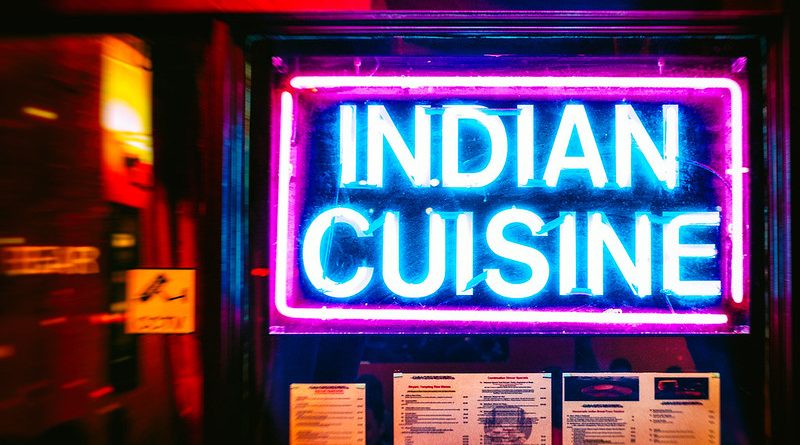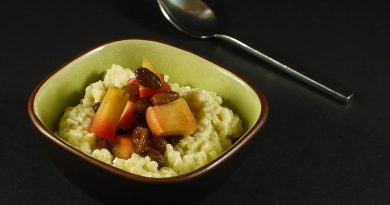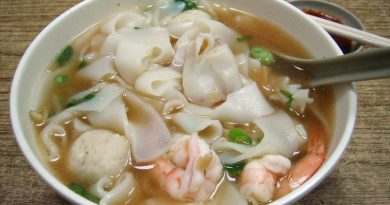An Introduction to Indian Cuisine
An Introduction to Indian Cuisine
Indian cuisine is shaped by myriad religious influences and what Indians eat, why, when and how is fundamental to their identity.
 They consider food and drink to nourish the spirit as well as the body; food in India is integral to spiritual advancement, it is joy and celebration. The Indian kitchen varies significantly from south to north and east to west, with the southern and western Indian cuisines leading the way of vegetarian Indian food as most Westerners have come to know and love it.
They consider food and drink to nourish the spirit as well as the body; food in India is integral to spiritual advancement, it is joy and celebration. The Indian kitchen varies significantly from south to north and east to west, with the southern and western Indian cuisines leading the way of vegetarian Indian food as most Westerners have come to know and love it.
It in the north and northeast, the Muslim influence of the Mughals with its meaty traditions can still be felt, as well as the glowing Tandoor of Punjab. Despite an immense fruit and vegetable variety in a land as large as Alaska, Texas and California combined (the three largest states in the USA), the core of any Indian meal is grain: rice in the south and wheat in the form of roti or naan (bread) in the north, and they both are eaten with daal (lentils or pulses).
Beyond that, the diversity of Indian food is limited only by a cook’s circumstances and imagination. Rest assured, every Indian cook will be a master of spices, treating each spice individually before combining them into various masalas (spice blends).
Indians love their food as much as foreigners do. Three meals a day is standard, although some parts of the country are so poor that they can barely afford one. More than 400 million Indians out of the 1.2 billion strong population live on under $1.25 per day. Yet, whoever can, will celebrate their three main meals and stick as many tiffins (snacks) into the daily diet as they can fit without sabotaging their appetite.
Read: Operation Lunch: The Art of Tiffin
Modern Indian culinary practices have their roots in Ayurveda, the ancient science of life, health and longevity. Ayurveda classifies foods according to their positive and negative energies as well as their medicinal qualities.
Developed by the Aryans in the second millennium BC, it is still the most widely practiced form of medicine in India. The underlying idea of ‘you are what you eat – you eat according to what you are’ follows the basic principle that one cannot maintain a healthy body with unsuitable food.
It is worth nothing that all this has not stopped fast food chains from developing a stronghold in India’s megacities such as Mumbai, Delhi and Calcutta, but the average Indian will always turn to home-cooked food and an ayurvedic practitioner around the corner before anything else.
The strong association between spiritual purity and vegetarianism ensures that the majority of Indians are vegetarian, even though meat (with the exception of beef) is not strictly taboo in Hinduism. Buddhists and Jains adhere a philosophy called ahimsa (non-injury), yet Hinduism has a slightly less compassionate outlook and does not concern itself too much with the welfare of animals but with spiritual advancement.
Certain foods are deemed pure and sacred and may feature prominently in temple ritual. In the Hindu pantheon, each deity has its own favourite dish; Krishna for example is a lover of dairy products, Ganesha is always depicted with a bowl of modak (sweet rice flour dumplings). Any food that is first offered to the gods and then shared among others is known as prasad.
The drink of the nation is certainly chai, an addictive and unique brew: more milk than water, stewed for a long time and frequently sugary enough to give you an energy boost. A glass of steaming, sweet chai is the perfect antidote to heat and stress of Indian life and travel and is served before, after and in between meals.
The national meal in India, unsurprisingly, is curry – or at least Westerners would like to believe that, as ironically, curry does not exist in the Indian cuisine. It is an Anglicisation of the Tamil word kari (black pepper), and if discovered on a menu, one is most certainly in a tourist restaurant.
In fact, it is the British who are responsible for this misleading food description, as in the 17th century they used the word curry to describe any spicy stew or broth. Indians never refer to their exquisite spicy dishes as a curry, and frequently they will encourage foreigners to start learning the individual names of their dishes.
Indian spice merchants are said to have invented the well-known curry powder for British colonial personnel returning to Britain. The closest to curry powder purchased in a store is probably Garam Masala; garam means warm or hot and masala refers to a mixture of spices[1]. Although Garam Masala recipes can vary, they are a usually a fusion of cumin and coriander seed powder, fresh ginger, garlic and cilantro. Cumin, cinnamon, cardamom, black pepper and cloves are the backbone of most garam masalas.
Not all curries are necessarily ‘hot’ in the sense of being very spicy, but the spice mixture has the warmth and complexity that we generally associate with a curry. A supreme comfort food!
Although many curries are vegetarian dishes, they may contain meat, poultry, fish or shellfish. A curry can be either wet or dry, the latter being cooked without the yoghurt, ghee, coconut milk or stock. Whether wet or dry, curries, by whatever name, are India’s greatest contribution to the world of cuisines.
Before anyone dives into the Indian food, they should be reminded of Indian table and eating etiquette. In rural India, food is still eaten with the right hand (the left is associated with bathroom business), although the use of cutlery is prevalent in urban areas in North India. Flatbreads (chapati, roti, naan) who are particularly popular in that area are served with every meal and help to gather food and sop up gravies and curries. Only the fingertips are used for eating, and although India has a reputation as a bacterial haven, Indians are quite obsessive about washing hands before and after meals. In South India, banana leaves are still used in the same function as spoons, especially for soupy and very liquid food.
Indians are passionate eaters of their home-cooked food, or anything that is prepared in the sanctity of their own home. The concept of eating in restaurants, and a fancy Indian restaurant culture did in fact only spring up in the last 50 years.
Equally popular to home-cooked food, are the Indian wayside eateries called dhaba, which is more of a way of life – an oasis to truck drivers, bus passengers and travellers going anywhere by road in India’s vast, beautiful and often challenging landscape.




